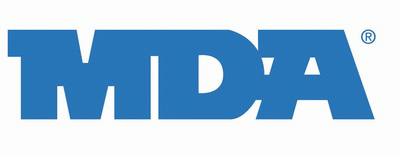Mo's Manic Monday - Ship
Posted: Monday, December 03, 2007 by Travis Cody in
Welcome to another Manic Monday with Morgen. Don't forget to cruise by MM HQ at It's A Blog Eat Blog World. Today's theme is Ship.
My information comes from the Naval Historical Center Online Library Listing.
In honor of Pearl Harbor Day coming up on Friday, I give you the Battleships of the United States Navy in December 1941. USS Nevada, commissioned in March 1916 and decommissioned in August 1946 after use as a target for atomic bomb testing in July 1946 at Bikini Atol. During the attack on Pearl Harbor, USS Nevada managed to get underway. She was hit by several bombs and torpedos as she attempted to steam out of the harbor. Rather than take the chance of sinking in the channel and blocking the harbor to traffic, her Captain beached her. She was repaired and returned to the fleet to see action at Attu in May 1943, the Normandy D-Day landings in June 1944, Iwo Jima and Okinawa in 1945.
USS Nevada, commissioned in March 1916 and decommissioned in August 1946 after use as a target for atomic bomb testing in July 1946 at Bikini Atol. During the attack on Pearl Harbor, USS Nevada managed to get underway. She was hit by several bombs and torpedos as she attempted to steam out of the harbor. Rather than take the chance of sinking in the channel and blocking the harbor to traffic, her Captain beached her. She was repaired and returned to the fleet to see action at Attu in May 1943, the Normandy D-Day landings in June 1944, Iwo Jima and Okinawa in 1945. USS California, commissioned in August 1921 and decommissioned in February 1947, later sold for scrap in 1959. She was sunk by bombs and torpedos during the attack, but did not capsize. It took two years to complete salvage and repairs. USS California returned to the fleet and participated at Saipan, Guam and Tinian during June and July 1944. She was at Leyte Gulf in October and November 1944 and Lingayen Gulf in January 1945. USS California supported the occupation of Japan after the surrender in August 1945.
USS California, commissioned in August 1921 and decommissioned in February 1947, later sold for scrap in 1959. She was sunk by bombs and torpedos during the attack, but did not capsize. It took two years to complete salvage and repairs. USS California returned to the fleet and participated at Saipan, Guam and Tinian during June and July 1944. She was at Leyte Gulf in October and November 1944 and Lingayen Gulf in January 1945. USS California supported the occupation of Japan after the surrender in August 1945. USS Maryland, commissioned in July 1921 and decommissioned in April 1947, later sold for scrap in 1959. She sustained only minor damage during the attack and was able to join the fleet for action in 1942 off the west coast as part of Task Force One. USS Maryland took part in operations at Tarawa and Kwajalein in 1943 and 1944, at Saipan in 1944, at the Palaus and Leyte Gulf in 1944, and Okinawa in 1945. She was damaged at Okinawa and did not return to action before the end of the war.
USS Maryland, commissioned in July 1921 and decommissioned in April 1947, later sold for scrap in 1959. She sustained only minor damage during the attack and was able to join the fleet for action in 1942 off the west coast as part of Task Force One. USS Maryland took part in operations at Tarawa and Kwajalein in 1943 and 1944, at Saipan in 1944, at the Palaus and Leyte Gulf in 1944, and Okinawa in 1945. She was damaged at Okinawa and did not return to action before the end of the war.  USS Oklahoma, commissioned in May 1916. She was moored outside of USS Maryland and was vulnerable to many torpedo hits during the attack that tore holes in her port side. She quickly rolled and sank, killing 400. Some of the crew were saved by salvage and rescue divers who were able to cut through her hull. Although she was righted and dry-docked, she was too damaged to repair sufficiently to return to the fleet. Formally decommissioned in 1944, sold for scrap in 1946, she was on a tow to California from Hawaii when she sank in 1947.
USS Oklahoma, commissioned in May 1916. She was moored outside of USS Maryland and was vulnerable to many torpedo hits during the attack that tore holes in her port side. She quickly rolled and sank, killing 400. Some of the crew were saved by salvage and rescue divers who were able to cut through her hull. Although she was righted and dry-docked, she was too damaged to repair sufficiently to return to the fleet. Formally decommissioned in 1944, sold for scrap in 1946, she was on a tow to California from Hawaii when she sank in 1947. USS Tennessee, commissioned in June 1920 decommissioned in February 1947, later sold for scrap in 1959. During the attack, USS Tennessee took two bomb hits and was damaged by buring oil from USS Arizona. She operated off the west coast after repairs at Puget Sound Navy Yard in Washington. She saw action in the Aleutians in August 1943, then at Tarawa, Kwajalein, Eniwetok, New Ireland, Saipan, Guam, Tinian, Anguar and Pelieu, and Leyte Gulf. She provided support at Iwo Jima and Okinawa.
USS Tennessee, commissioned in June 1920 decommissioned in February 1947, later sold for scrap in 1959. During the attack, USS Tennessee took two bomb hits and was damaged by buring oil from USS Arizona. She operated off the west coast after repairs at Puget Sound Navy Yard in Washington. She saw action in the Aleutians in August 1943, then at Tarawa, Kwajalein, Eniwetok, New Ireland, Saipan, Guam, Tinian, Anguar and Pelieu, and Leyte Gulf. She provided support at Iwo Jima and Okinawa.  USS West Virginia, commissioned in December 1923 and decommissioned in January 1947, sold for scrap in 1959. She was sunk by bomb and torpedo hits during the attack, but did not capsize. Modernized at Puget Sound Navy Yard in Washington, USS West Virginia participated at Leyte Gulf, Mindoro, Lingayen Gulf, Iwo Jima and Okinawa. She supported the occupation of Japan after the end of the war, and also brought Pacific War veterans back to the States.
USS West Virginia, commissioned in December 1923 and decommissioned in January 1947, sold for scrap in 1959. She was sunk by bomb and torpedo hits during the attack, but did not capsize. Modernized at Puget Sound Navy Yard in Washington, USS West Virginia participated at Leyte Gulf, Mindoro, Lingayen Gulf, Iwo Jima and Okinawa. She supported the occupation of Japan after the end of the war, and also brought Pacific War veterans back to the States. USS Pennsylvania, Fleet Flagship, commissioned in June 1916 and scuttled at sea in 1948 after use as a target for atomic bomb testing in July 1946 at Bikini Atol and radioactive studies at Kwajalein. She was in dry dock during the attack. She participated in the Aleutians in 1943, the Makin raid, Kwajalein and Eniwetok, Saipan, Tinian and Guam, the Palaus and at Leyte Gulf, Lingayen Gulf, and Okinawa. She was the last major US Navy ship to take combat damage in World War II.
USS Pennsylvania, Fleet Flagship, commissioned in June 1916 and scuttled at sea in 1948 after use as a target for atomic bomb testing in July 1946 at Bikini Atol and radioactive studies at Kwajalein. She was in dry dock during the attack. She participated in the Aleutians in 1943, the Makin raid, Kwajalein and Eniwetok, Saipan, Tinian and Guam, the Palaus and at Leyte Gulf, Lingayen Gulf, and Okinawa. She was the last major US Navy ship to take combat damage in World War II. USS Arizona, commissioned in October 1916. Her forward magazines were exploded by a direct bomb hit. She took several other bomb and torpedo hits that nearly broke her in half. She capsized and sank with more than 1100 of her crew. Her armament and other salvagable equipment was removed, but USS Arizona and her crew were not further disturbed. The place where she sank is hallowed ground. In the 1960's, the USS Arizona Memorial was erected over her as a permanent shrine to honor those killed during the attack.
USS Arizona, commissioned in October 1916. Her forward magazines were exploded by a direct bomb hit. She took several other bomb and torpedo hits that nearly broke her in half. She capsized and sank with more than 1100 of her crew. Her armament and other salvagable equipment was removed, but USS Arizona and her crew were not further disturbed. The place where she sank is hallowed ground. In the 1960's, the USS Arizona Memorial was erected over her as a permanent shrine to honor those killed during the attack. 
There were other ships heavily damaged or destroyed during the attack at Pearl Harbor, such as the training ship USS Utah which took torpedo hits and sank. The Japanese planes bombed targets off the west side of Ford Island, in the Navy Yard, and the airfields Wheeler, Hickam, Bellows, Ewa, and Kanoehe Bay.

















The sight of a naval ship sends shivers down my spine, as much as seeing the F-16s fly overhead every morning.